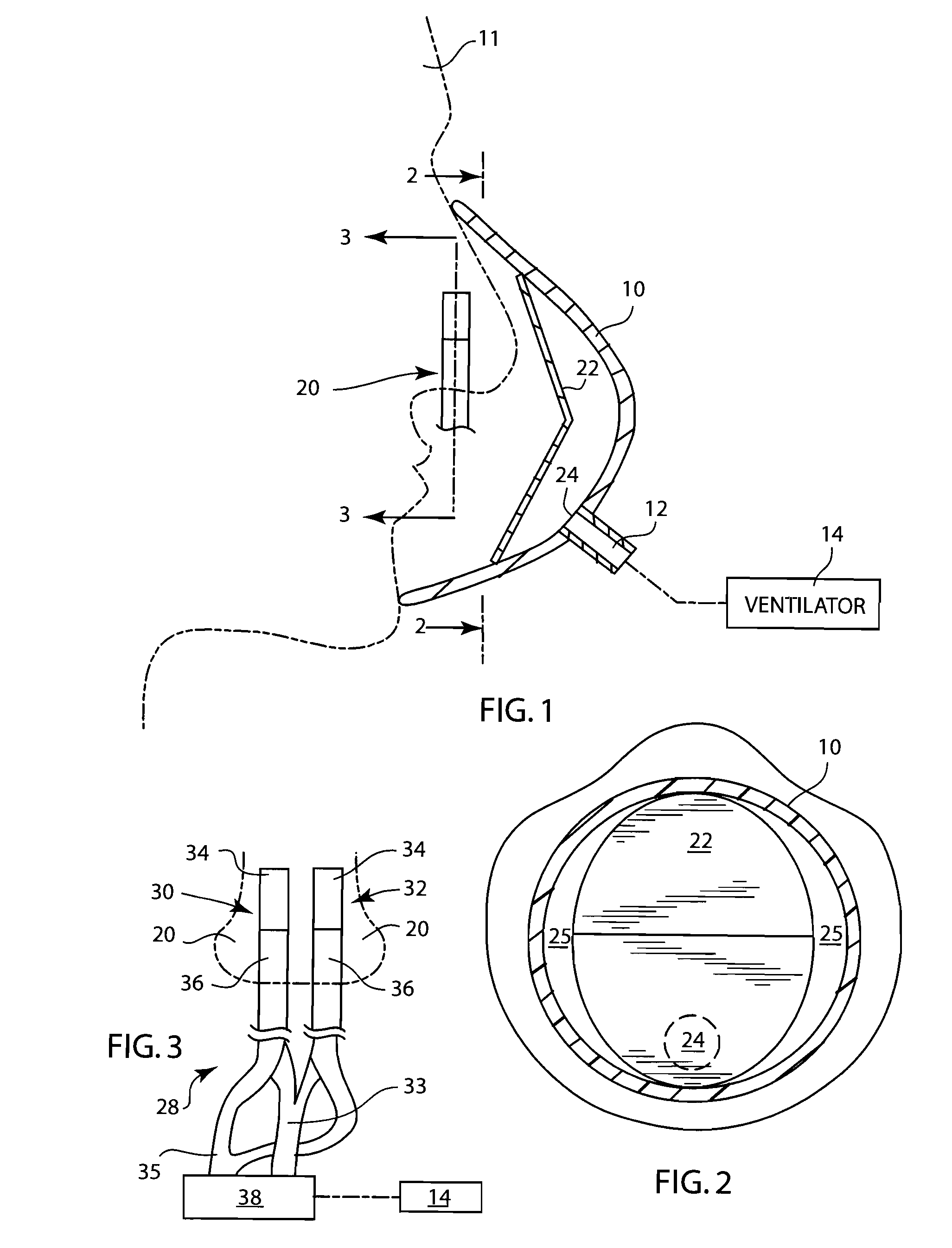Arrangement and method for detecting respiratory effort of a patient
a patient and breathing effort technology, applied in the field of arrangement and method of providing ventilation therapy to patients, can solve the problems of reducing the assistance provided to patients, affecting the detection effect of patients, and affecting the detection effect of actual patient breathing effort, so as to reduce the possibility of false readings, reduce the effect of confounding secondary effects, and eliminate the potential for false readings
- Summary
- Abstract
- Description
- Claims
- Application Information
AI Technical Summary
Benefits of technology
Problems solved by technology
Method used
Image
Examples
Embodiment Construction
[0019] In the preferred embodiments of the present invention described in detail below, an arrangement and method for detecting spontaneous respiratory efforts of a patient is provided. It should be understood that the drawings and specification are to be considered an exemplification of the principles of the invention, which is more particularly defined in the appended claims.
[0020] Referring to FIG. 1, an arrangement for detecting actual spontaneous respiratory effort of a patient 11 receiving ventilatory support via a patient breathing circuit 12 is shown. The breathing circuit 12 is connected to the patient 11 via a patient / breathing circuit interface, which in the embodiment shown is a facemask 10, which is suitable for positive airway pressure ventilation. The facemask 10 is adapted to provide a closed connection between a breathing passage of the patient, which in FIG. 1 comprises the patient's nasal passages 20, and the breathing circuit 12. The facemask 10 and breathing ci...
PUM
 Login to View More
Login to View More Abstract
Description
Claims
Application Information
 Login to View More
Login to View More - R&D
- Intellectual Property
- Life Sciences
- Materials
- Tech Scout
- Unparalleled Data Quality
- Higher Quality Content
- 60% Fewer Hallucinations
Browse by: Latest US Patents, China's latest patents, Technical Efficacy Thesaurus, Application Domain, Technology Topic, Popular Technical Reports.
© 2025 PatSnap. All rights reserved.Legal|Privacy policy|Modern Slavery Act Transparency Statement|Sitemap|About US| Contact US: help@patsnap.com



